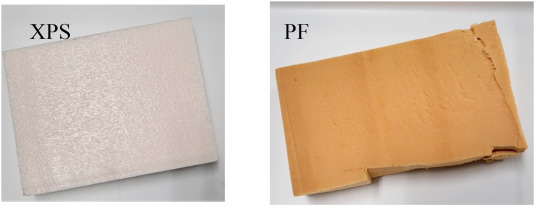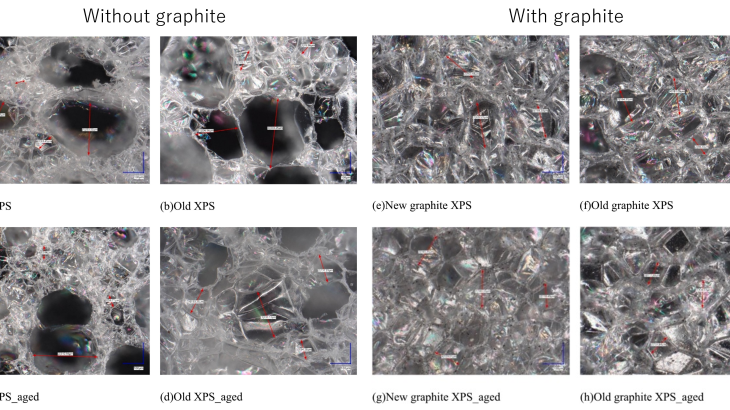Physicochemical changes due to water vapor and aging have long been unknown for XPS (extruded polystyrene foam) and PF (phenolic foam), which are typical foamed plastic insulation materials, and have been characterized. Traditionally, most investigations have reported that insulation materials show little change in thermal conductivity over time, and that there is almost no change in their material properties after installation. However, in the past 4~5 years, it has been internationally pointed out that this is not the case and that there may be clear material changes, particularly, but not entirely, mechanical properties (dimensional changes) and in-situ thermophysical properties (thermal conductivity changes) that may have been affected by the installation environment for some samples. In response to such phenomena, this study reports the results of a considerable variety of data accumulated on XPS (extruded polystyrene foam) and PF (phenolic foam), with a particular focus on the case where humidity is introduced.
-XPS exhibits structural changes with aging and is not significantly affected by water vapor.
-PF continues to polymerize with long-term aging, which can lead to a heterogeneous cell structure.
-PF may undergo hydrolysis and cause coarsening of the pores when water vapor degradation occurs.
and so on have been reported. If you are interested, please take a look at our publication.
For example, We think energy balance of ZEB(zero emission building) and ZEH(zero emission house) needs to change the strategy for this publication.
https://doi.org/10.1016/j.dibe.2024.100429




